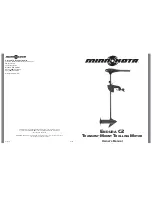
75
•
Connect USB Blaster to the C5G board and install USB Blaster driver if necessary.
•
Execute the demo batch file “
C5G_UART_USB_LE
D.bat” under the batch file folder
C5G_USRT \demo_batch.
•
the nios II-terminal and putty terminal running result as shown in
Figure 6-7 Running result of uart_usb demo
•
In the putty terminal, type character to change the led state. Type digital number to toggle the
LEDR[9..0] state and type a/A or n/N to turn on/off all LEDR.
6
6
.
.
3
3
H
H
D
D
M
M
I
I
T
T
X
X
This section introduces a reference design for programming the on-board ADV7513 HDMI encoder.
The entire reference is composed of two parts -- the hardware design and the software control
program. A set of pre-built video patterns will be sent out through the HDMI interface and
presented on the LCD monitor as the user launches the provided executable binaries. The design
incorporates certain activities the user could perform to interact with the on-board HDMI TX
encoder.
System Block Diagram
shows the system block diagram of this reference design. The module “Video Pattern
Generator” copes with generating video patterns to be presented on the LCD monitor. The pattern is
composed in the way of 24-bit RGB 4:4:4 (RGB888 per color pixel without sub-sampling) color
encoding, which corresponds to the parallel encoding format defined in Table 5 of the "ADV7513
Hardware User's Guide," as shown below.














































